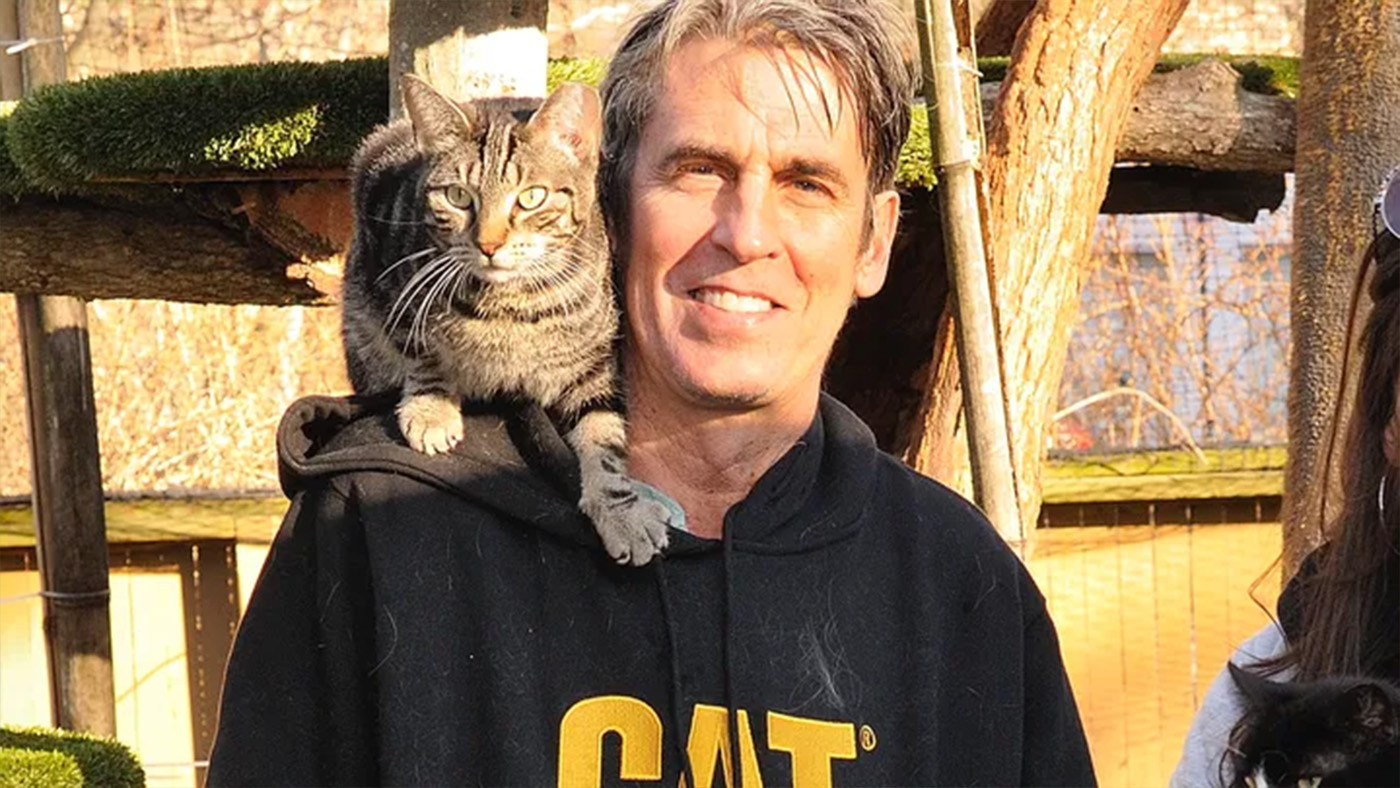8 calm dog breeds with a relaxed outlook on life
Check out these calm dog breeds that are guaranteed to put a smile on your face
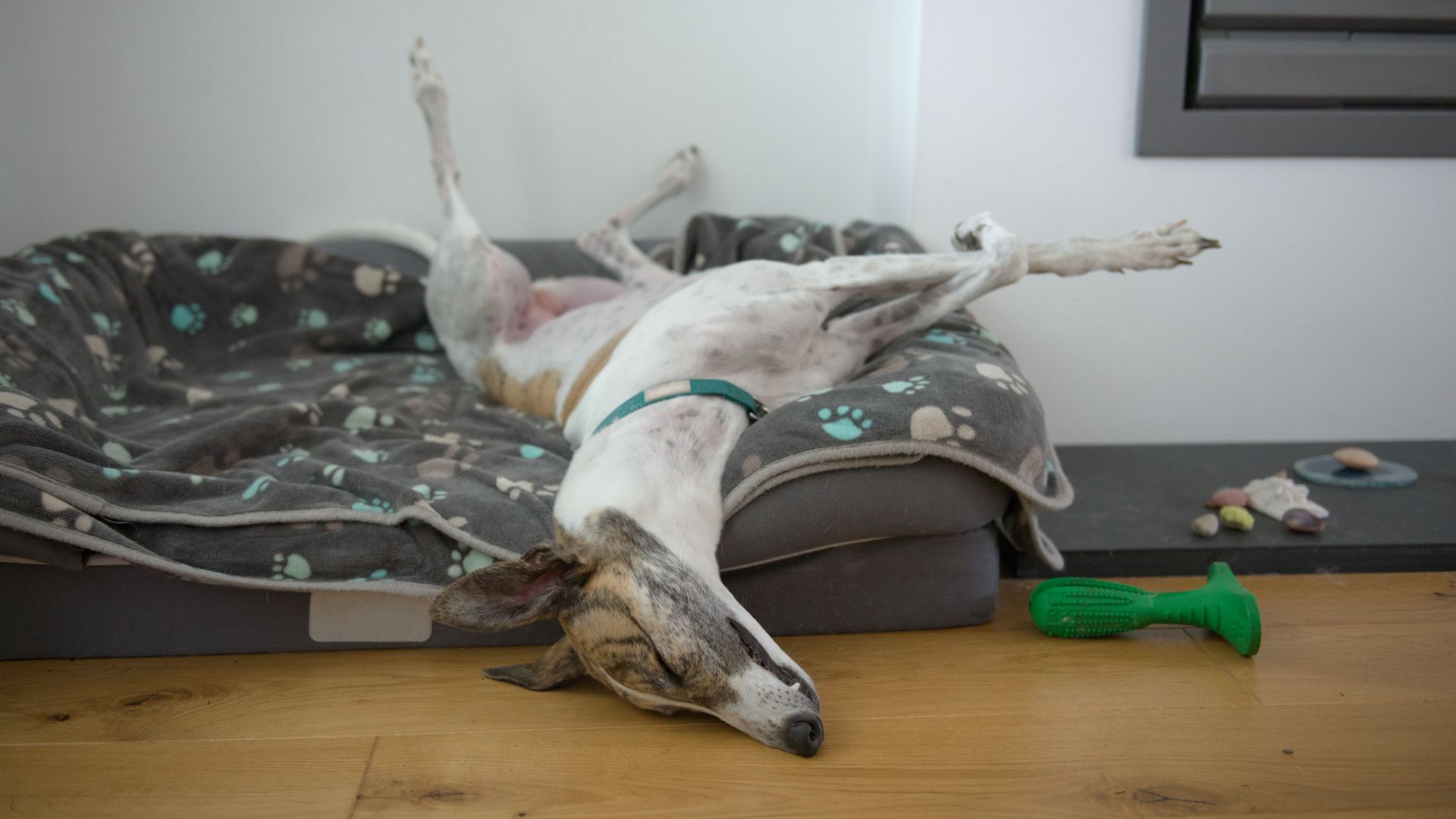
Do calm dog breeds really exist? When we first think about dogs, we instantly picture bouncy, energetic pups that are filled with uncontainable excitement, but what about those with the opposite disposition?
When you think of ‘calm’ you may picture a canine who loves nothing more than a good snooze, but actually it refers to a dog’s all-round qualities – for example, the ability to maintain composure in challenging situations. This means that calm dog breeds react to stimuli – such as sounds, smells, or objects – in a more docile than average manner, commonly without lunging, growling, or exhibiting any signs of stress.
Of course, many factors influence a dog's personality and behavior, including their owner’s dedication to them. Good handling, plenty of exercise and training is a must for every dog, but in general, calm dog breeds can make excellent dogs for first-time owners. They also excel when it comes to living with children, the elderly and sharing a home with other animals. Calm dog breeds even thrive within medical environments, where you’ll often see crossover between calm breeds and the best therapy dog breeds.
If you're looking to add one to your home, our round-up of the world’s calmest pooches will put you in the right direction and also give you a bit of advice around getting the best behavior out of your pooch.
Calm dog breeds
1. Cavalier King Charles Spaniel

Famous for their nobility and gentle demeanor, it is thought that the Cavalier King Charles Spaniel can communicate more effectively with their owner as a result of their round eyes and sweet expression.
Make sure you ensure that this breed is enrolled into the correct classes as a puppy, as this will help to train and socialize the animal. They have the potential to become the best four-legged friend you could ever wish for.
Ideal therapy dogs, Cavalier King Charles Spaniels are fond of getting snuggly on a lap or two (they’re not fussy who it belongs to!), and work well within households that have young children, other animals including cats, and even with the senior population.
There are various health conditions associated with the Cavalier King Charles Spaniel, such as eye problems, mitral valve disease (a heart condition) and hip dysplasia. It’s therefore wise to make sure your puppy’s parents are sufficiently health tested.
Find more Cavalier King Charles Spaniel facts here.
2. Saint Bernard

Dating back to 1050, Saint Bernards were once used to help hospice monks locate lost travelers in the snow-covered Alps.
Despite their large – and sometimes intimidating – size, Saint Bernards are gentle giants with big hearts. Due to their wrinkled brow, they often appear to be grinning at you – something that will always brighten your day!
Benefiting from early training classes, Saint Bernards are known for their ability to quickly learn and respond to their owner’s commands. Don’t forget, though, that these gentle giants could quite easily knock people over as they grow older, especially young children, so training is key in ensuring that they express controlled behaviors.
Another thing to note is that Saint Bernards can be prone to joint and bone issues, and have an association with dilated cardiomyopathy (DCM).
Still not convinced? Here are 32 reasons to love St. Bernards.
3. Pekingese
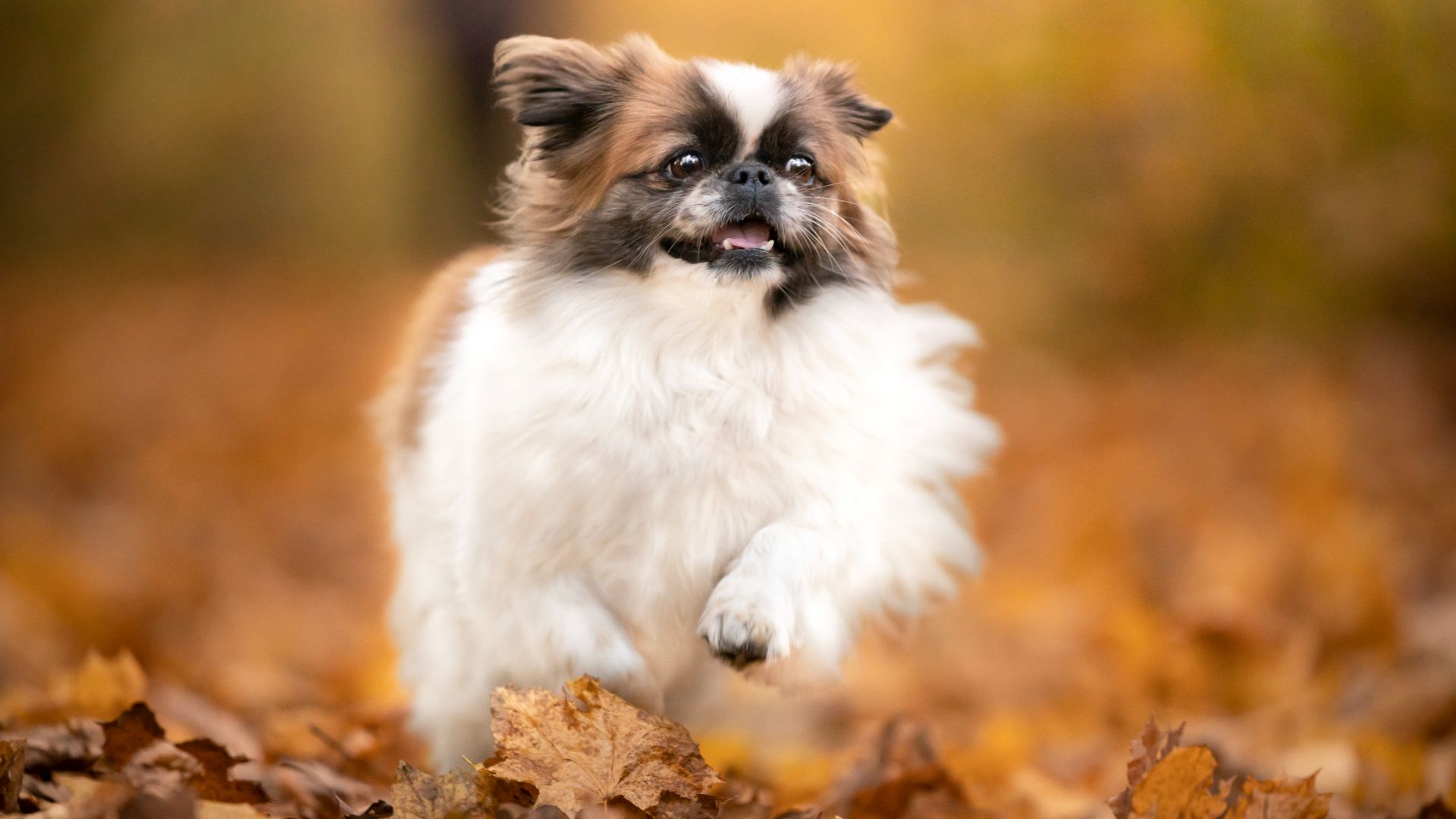
Originally bred through the centuries to be cherished companions of the imperial family of China, Pekingese – also known as Pekes – have made quite the reputation for themselves.
This unusual yet somewhat regal-looking breed is extremely friendly and outgoing. Rather sassy in nature, this canine is also incredibly loving, and is known to form very strong bonds with their owners.
An incredibly adaptable breed, Pekingese can live with almost any type of owner. From newbie dog parents to those that live in apartments, this breed loves the attention, but due to their slightly stubborn side, they only crave the attention when they want it, and not when anyone else wants to give it!
Be aware, though, that the Peke is a brachycephalic (flat-faced) breed, and their respiratory health should be closely monitored.
4. French Bulldog
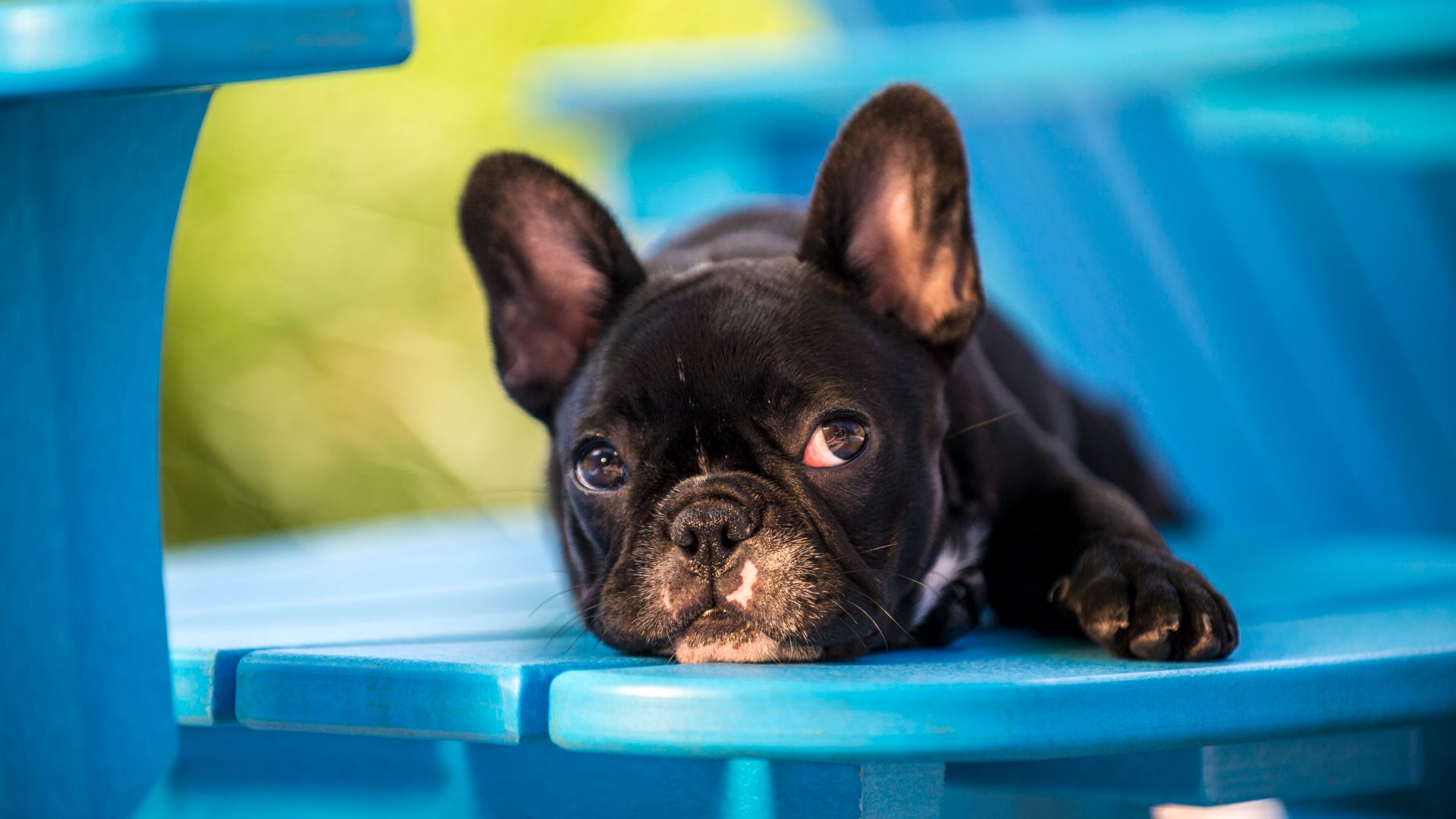
The second most popular breed of dog in the US, French Bulldogs are considered to be easy-going yet goofy characters – there’s certainly never a dull moment with this adorable and snuggly pup around!
Due to their calming nature, French Bulldogs are said to make ideal pals for children, seniors, those with anxiety or any other medical needs that a therapy dog could help with, and those who live in apartments or smaller properties.
They can often be found longing for their owners attention – they definitely know how to give good 'puppy dog eyes' – or simply acting as their owner’s sweet and much smaller shadow, choosing to follow them around everywhere they go.
While there are so many reasons to love French Bulldogs, make sure you read up on common French Bulldog health issues before you bring your new pooch home.
5. Irish Wolfhound
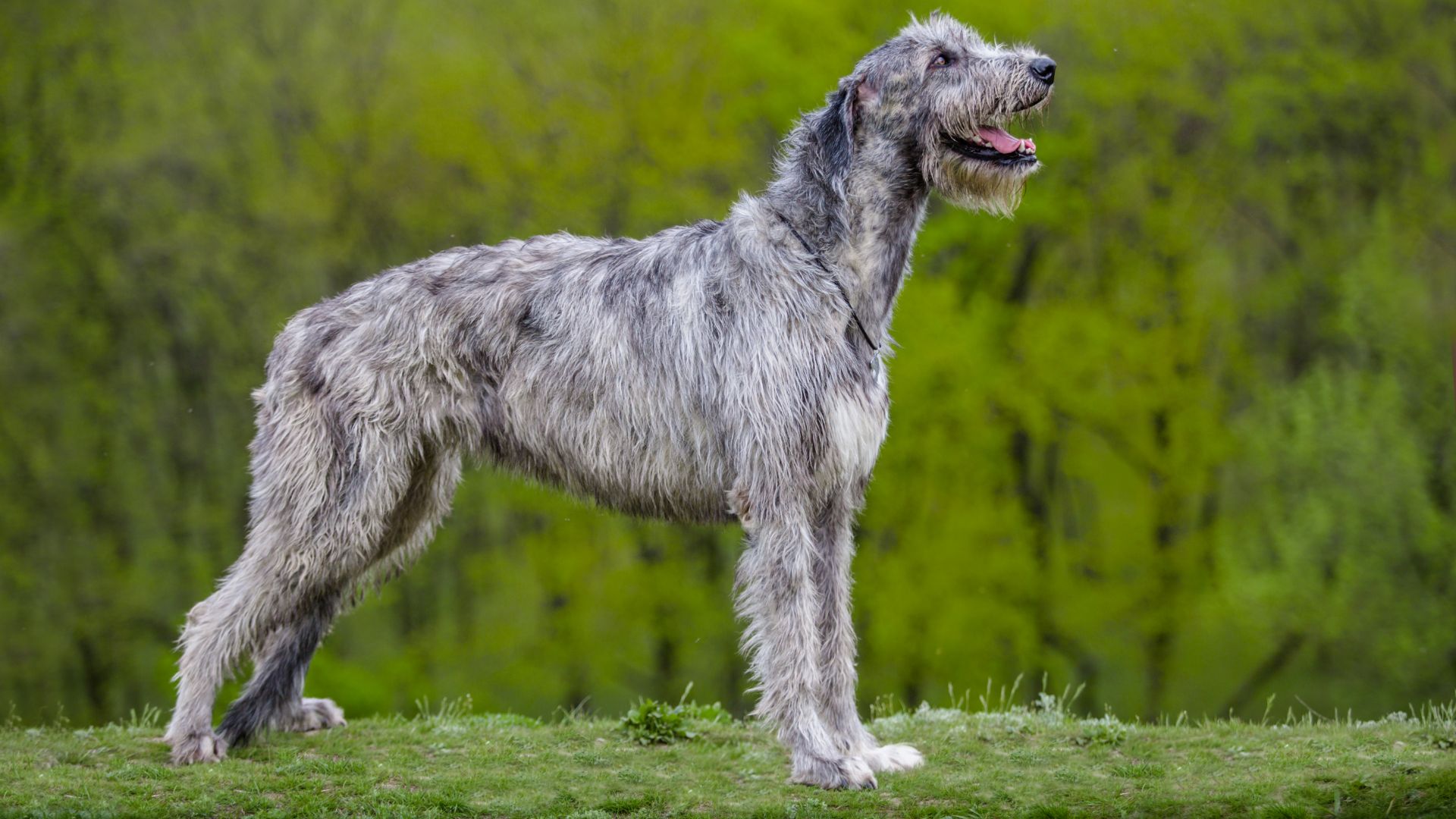
This loyal breed is commonly referred to as an unflappable companion because of their incredibly chilled-out personalities.
Standing up to 2 feet tall, and in some cases, weighing more than 100 pounds, Irish Wolfhounds can become a bit of a handful if not introduced to training classes as a pup.
Great with children, it’s important to ensure that this large breed is encouraged and rewarded for being on their best behavior so that they can be completely calm in nature.
Read more incredible Irish Wolfhound facts here.
6. Greyhound
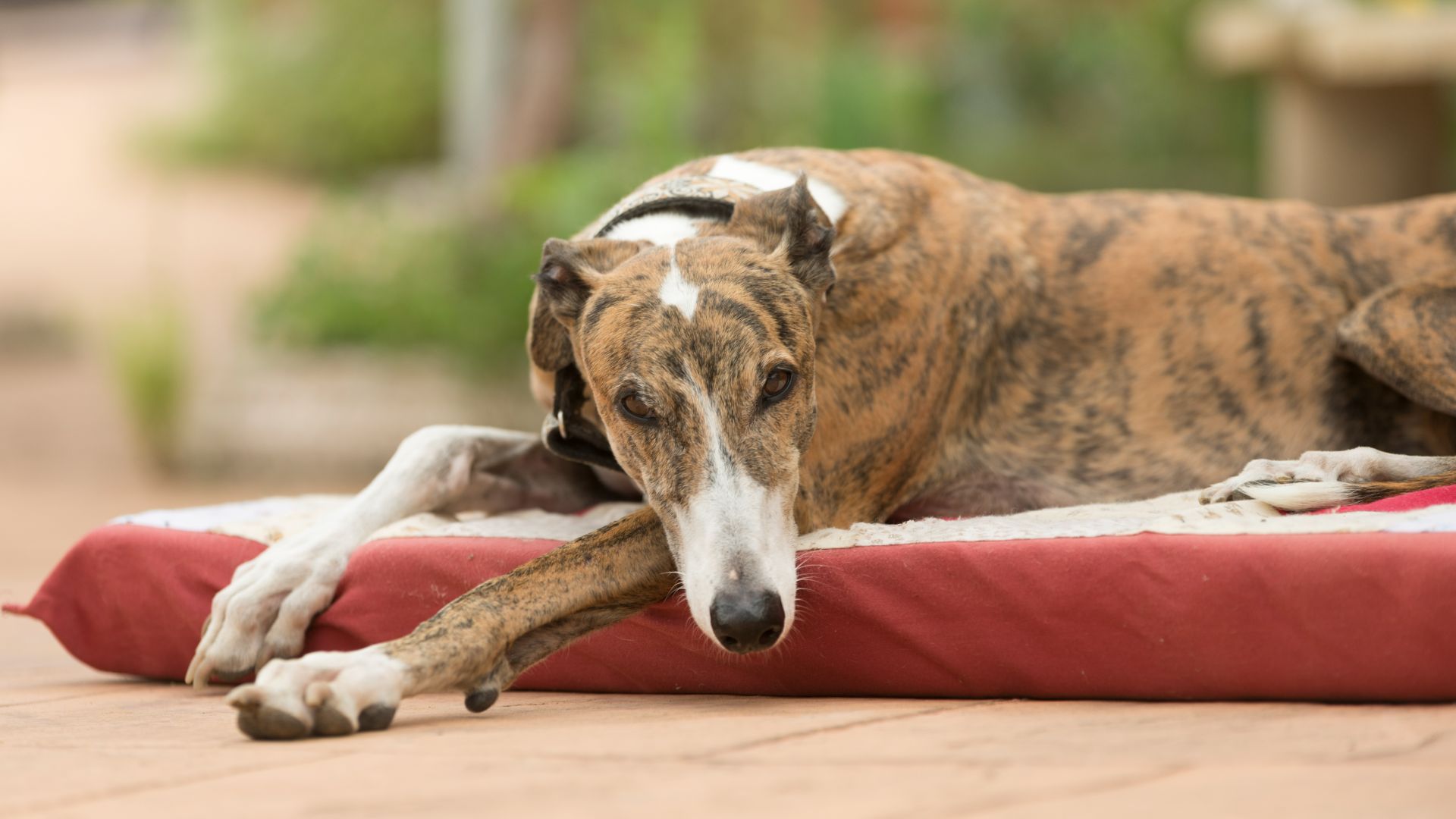
Wait a minute, aren’t Greyhounds one of the fastest dog breeds commonly found zooming around a track? It’s true that these long-bodied pooches are one of the canine world’s top athletes, but once they’ve had a burst of energy, they are commonly found snoozing.
As such, greyhounds often come recommended as apartment dogs, and make great pets for the elderly. They’re quiet and placid, sensitive yet affectionate.
Greyhounds are naturally lean and thin-coated, so benefit from the best dog coat in chilly weather. Two 20-minute walks a day are usually sufficient – they prefer a short but intense spell rather than a long, steady plod.
Healthwise, watch out for dental issues (it’s worth reading up on how to prevent and treat dog gum diseases) and bloat in your Greyhound pal.
Read more greyhound facts here.
7. Great Dane
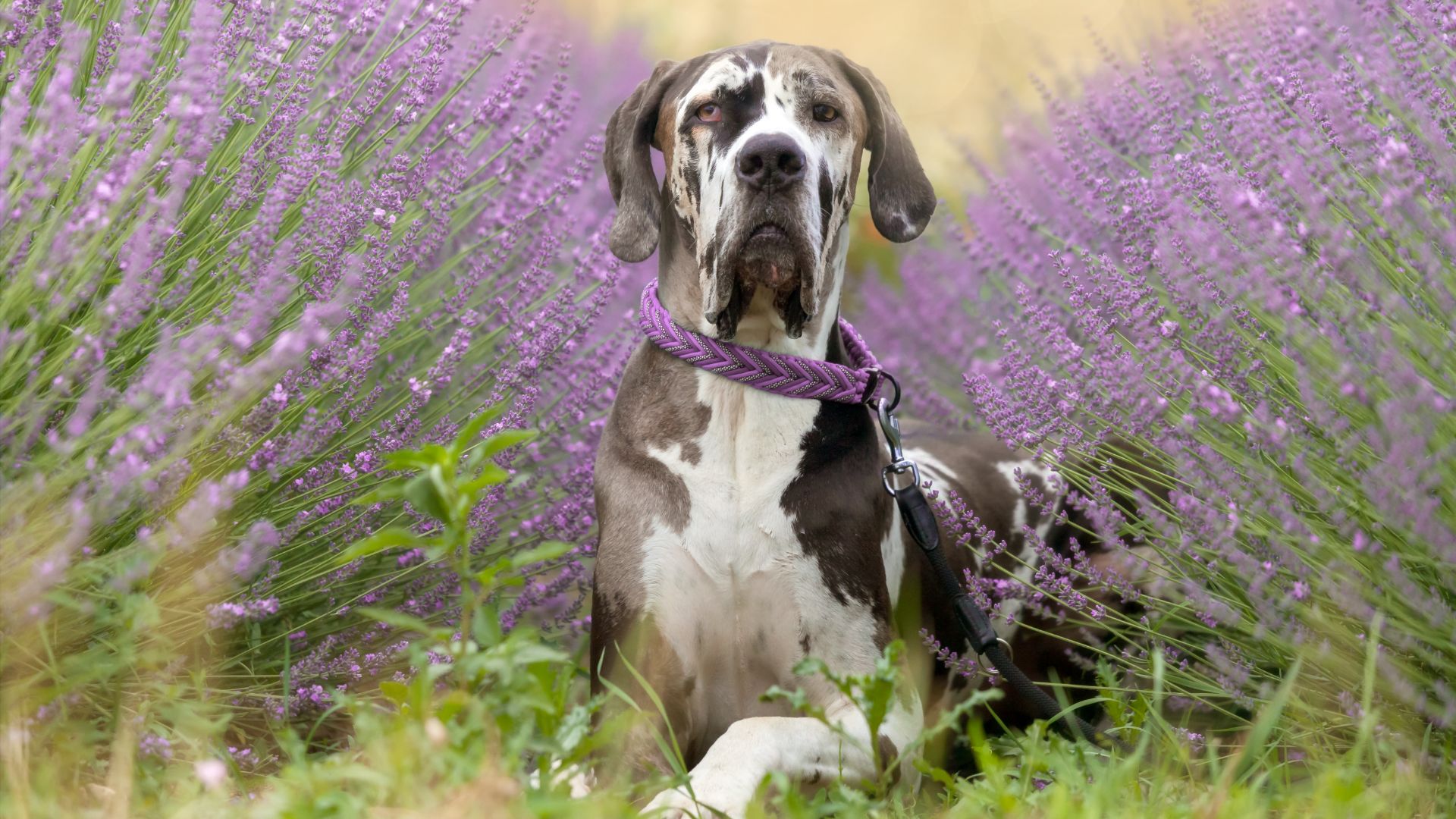
Great by name and nature, this large pooch is one of the most affectionate dog breeds. They love children, but due to their size benefit from a solid training programme to teach them to manage their energy. Though they are laid-back, even minimal exuberance could knock over a toddler!
Great Danes need a couple of short walks a day and will love spending most of their time luxuriating on a sofa or one of the best large dog beds.
Health conditions to be aware of include bloat, which is the number one killer of Great Danes, and heart conditions such as DCM.
Read more Great Dane facts here.
8. Basset Hound
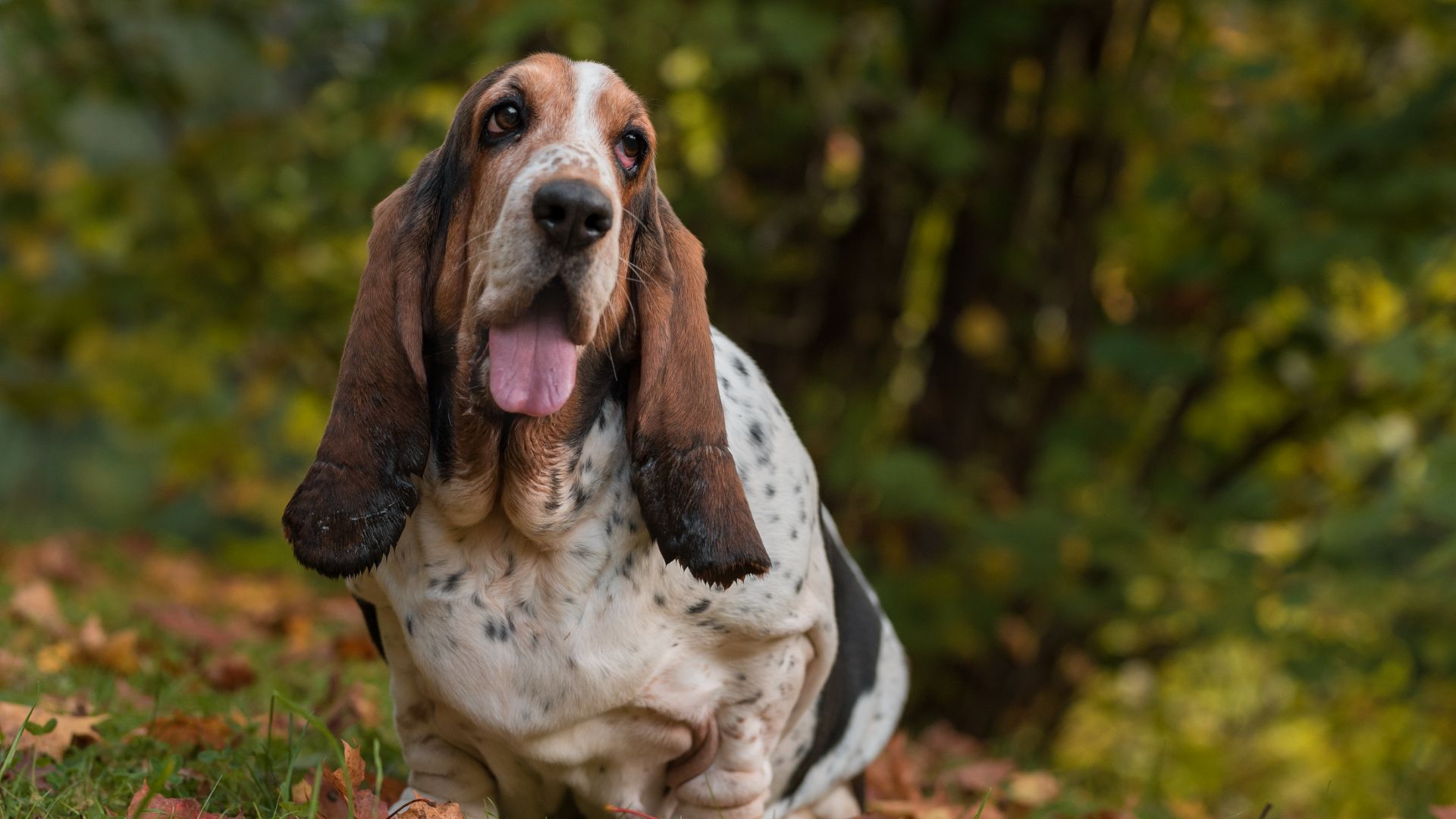
Known for their floppy ears and expressive eyes, Basset Hounds are super loving and social. They are famous for looking as if they have too much skin and for their floppy ears, but be aware that as an owner you’ll need to clean them diligently.
They have an incredible sense of smell and are likely to enjoy the best dog puzzle toys. While they are a low-energy breed, they are prone to obesity, so need to have their weight monitored. Like many short-legged dogs, they can also get back problems. These can be exacerbated by carrying extra pounds, so it makes keeping them slim extra important!
They’re mild-mannered and loyal, but be prepared – they can be vocal!
Are calm dog breeds easier to care for?
Now you’ve seen these wonderful breeds, let’s find out what it means to actually be described as a ‘calm’ breed.
While it’s easy to associate giant breeds with a more laid-back attitude, companion animal vet Dr Rebecca MacMillan advises that size isn’t the only indicator when it comes to calm dog breeds.
“Other more modestly sized dogs, such as the Cavalier King Charles Spaniel, would also be considered low energy,” she says.
Furthermore, calm doesn’t necessarily mean they’re an easy or low-maintenance breed.
“Like many pedigree dogs, calm dog breeds can be prone to various health complaints that owners should be aware of before purchasing their chosen pup,” Dr MacMillan adds.
In a similar vane, prospective owners shouldn’t fall into the trap of making assumptions based on what they believe to be a ‘calm’ breed.
“Be mindful of sweeping generalizations,” warns Dr MacMillan. “There is always variation between individuals within any breed.”
“Much of a dog’s personality is inherited from their parents, with calm parents being more likely to produce calm pups,” she continues. “Plus, good socialization and training play a big part, too. Get this right and you will increase your chances of having a calm and well-mannered companion.”
Before you invest in any new breed, it’s important to do your research. Talk to your local vet for advice on the breed that would best suit your circumstances before making the life-long commitment of a new furry family member.
“Just think whether this type of dog is right for you and your family,” advises Dr MacMillan. “If you are energetic and want to regularly go for long walks, then you may want to look at some other more active dog breeds instead.”
And, despite how calm they may be, exercise is crucial for every breed of dog, no matter their size or demeanor, so don’t be fooled by their strong desire to chill. Just like us, pooches need their daily dose of fresh air and activity.
Looking for a dog to counter your nervous energy? Here are the best dog breeds for emotional support

Dr MacMillan is a companion animal vet who has always had a passion for writing and client communication. She works in the South West and loves complex medical cases.

Bethany is an experienced writer who has been writing across the pets and equestrian sector for eight years.
Edited by Georgia Guerin.
Recent updates
This feature was last updated on February 13, 2025.
PetsRadar Newsletter
Get the best advice, tips and top tech for your beloved Pets
Chloe is a freelance writer, editor, and proofreader, who has more than ten years’ experience in creating animal-focussed content. From National Geographic to Animal Planet, Chloe’s passion for creating fact-filled features all about wildlife and the environment is evident. But it’s not just wild animals that Chloe’s fascinated by. Having written more than 75 articles for PetsRadar - and having her very own four-legged friend by her side - it’s no wonder that her love of dogs (and, of course, cats) has grown exponentially.
Her website, www.chloemaywrites.com, and social media pages - @ChloeMayWrites on Instagram, Facebook, and Twitter - showcase her knowledge through daily facts and trivia tidbits. For example, did you know that snails have teeth?!
- Dr Rebecca MacMillanVet
- Bethany StoneFreelance Writer

